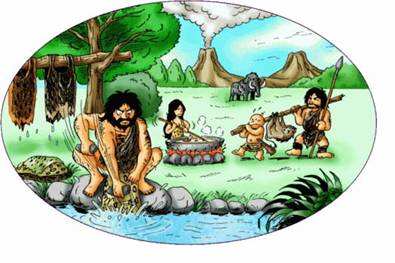The Emergence of the Primitive Agriculture
4 min readIn succession to the Paleolithic Age came the thriving Neolithic Age.The emergence of farming and domestic livestock breeding,ground stone ware,pottery,the popularization of villages and the formation of clanship distinguished the Neolithic Age from the preceding age.The human beings no longer solely lived off collecting at the mercy of Nature as they developed productive economy by transforming Nature.There appeared the matriarchal society and the patriarchal society and the latter was more prosperous than the former.In the latter period ofthe Neolithic Age there were signs indicating that the clanship was to break down,the private ownership to take shape and the differentiation of classes to intensify.
The Neolithic Age lasted for as long as 5,000 to 6,000 years until 4,000 years ago.
China is one of the countries in the world which took the lead in developing agriculture,thus it is one of the origins of agricultural cultivation.The primitive agriculture signaled the first stride people made in altering the Nature.

At that time the majority of cultivation tools were made of wood or stone;the slash-and-burn cultivation and the virgin soil cultivation prevailed along with animal husbandry,collecting and fishing.These are the general features determined by the primitive farming tools and techniques.
Through the long-time practice of collecting wild plants,people came into the knowledge of the growth of some edible plants and came to find that the seed or the core of plants buried into the soil might grow and produce fruit over a period of time,which inspired people to plant.On this point,many ancient classics such as The Book of Changes,Huainanzi,Historical Records relate that the legendary God of farming invented the plowshare and sowed five cereals of rice.Legend has it that the God of farming invented the plowshare and showed the fellow villagers the plowing techniques on the appropriate land under favorable weather conditions,so he is revered as the forefather of agriculture.About ten thousand years ago,the primitive planting began and was carried out by people’s own volition,which amounted to a revolutionary progress of human society and the productive economy was formed accordingly.This was an important signpost telling apart the Paleolithic Age and the Neolithic Age.
Conditioned by the natural environment,the agricultural development in the Neolithic Age displayed geographic differences between the South China and the North China.The main food of millet in the North of China was one of the cereals firstdomesticated by the primitive farming skills.China witnessed the first sowing of millet on a large scale at least seven to eight thousand years ago,far ahead of other countries.The experts in this field home and abroad have reached a consensus that millet originated from the North China.Moreover,the charcoaled millets,millet chaff and dust had been found subsequently in over 40 sites of the Neolithic Age which were scattered in Shandong province,Hebei province,Henan province,Shanxi province,Liaoning province,Heilongjing province,Gansu province,Qinghai and Xinjiang,which proved that millet had become the staple food as early as in th primitive period.
The rice was mainly produced in the South of China and it was one of the crops which played the most important role and enjoyed the longest history in China.Riceresidue dominated the crops ever found by archeologists.Of the Neolithic Age alone more than 120 sites have been found to have crop residue and most of these sites are situated in the reaches or south of the Yangtze River which are blessed with a mild climate,plentiful rainfall,a legion of lakes and marches.So these areas are very suitable for the growth of rice especially in those days when the agricultural cultivation was subjected to Nature to a large degree.

The dispute on the origin of wheat had persisted a long time in the study of Chinese agricultural history. No breakthrough in that regard was made until 1985 and 1986 when barley, wheat, sorghum and two types of millet in charcoaled form were discovered in the Neolithic Age site at the East Grey Mountain of Liuba Community at Minle County in Gansu province. According to the test results by use of Carbon 14, the site at the East Grey Mountain had a history of around 5,000 years. Such a finding settled the prolonged dispute on whether wheat was planted or not in thNeolithic Age and confirmed that the sowing of wheat had a history of more than 5,000 years. Thus the two discoveries in 1985 and 1986 proved to be very significant archeological findings regarding agricultural research.
Besides the stoneware, some production tools were made of bone, wood and pottery. There were also compound tools such as the wood-handled zax and the bone or clamsickle fixed with a handle.








